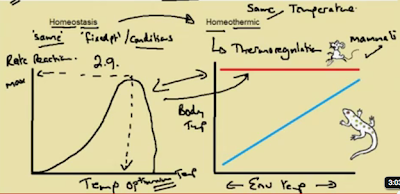Describe the structure and functioning of a simple reflex arc illustrated by the withdrawal of a finger from a hot object
Reflex is the simplex type of response. It is very quick and is involuntary (automatically happen without you being able to consciously controlling it). Reflex reactions are often for self-protection, such as blinking, sneezing, or pulling your hand away from a hot object.
 stimulus --> receptor --> sensory neurone --> relay neurone in CNS --> motor neurone --> effector --> response
stimulus --> receptor --> sensory neurone --> relay neurone in CNS --> motor neurone --> effector --> response
Impulse are usually passed from sensory nerves and remains in the spinal cord without going into the brain. The response is then processed in the spinal cord itself and then pass directly through the motor nerves to the effector (muslce) to bring about a response. It made the response much faster.
Input produces the same output. This means it is a ‘fixed decision’ to bring about reflex.
The small nerve called relay nerve in the spinal cord directly connects sensory nerve to the motor nerve so the response can take place.
They know which relay nerve to target because it is encoded within our DNA.
For example, you touch something hot you will immediately pull your hand away from it --> this is reflex
The “OUCH” came AFTER the reflex and it decided by the brain (as part of the information goes into the brain as well)
This happens after because reflex response is always faster.
The reflex arc for touching hot object:
Stimulus (pain sensor responding to heat) --> sensory neuron --> spinal cord --> relay neuron --> motor neuron --> effector (muscles) --> response (pulling your hand away from the heat source)







